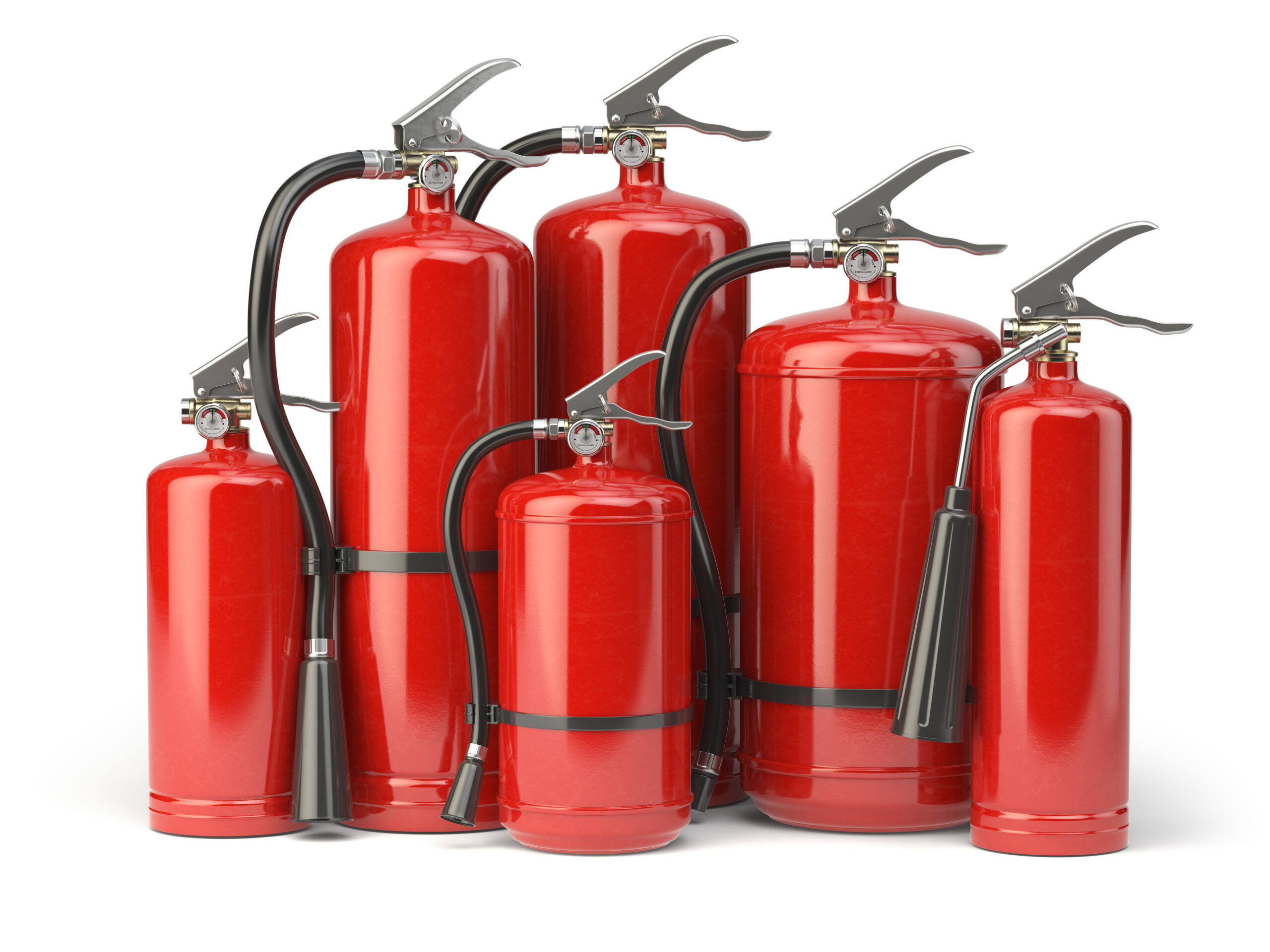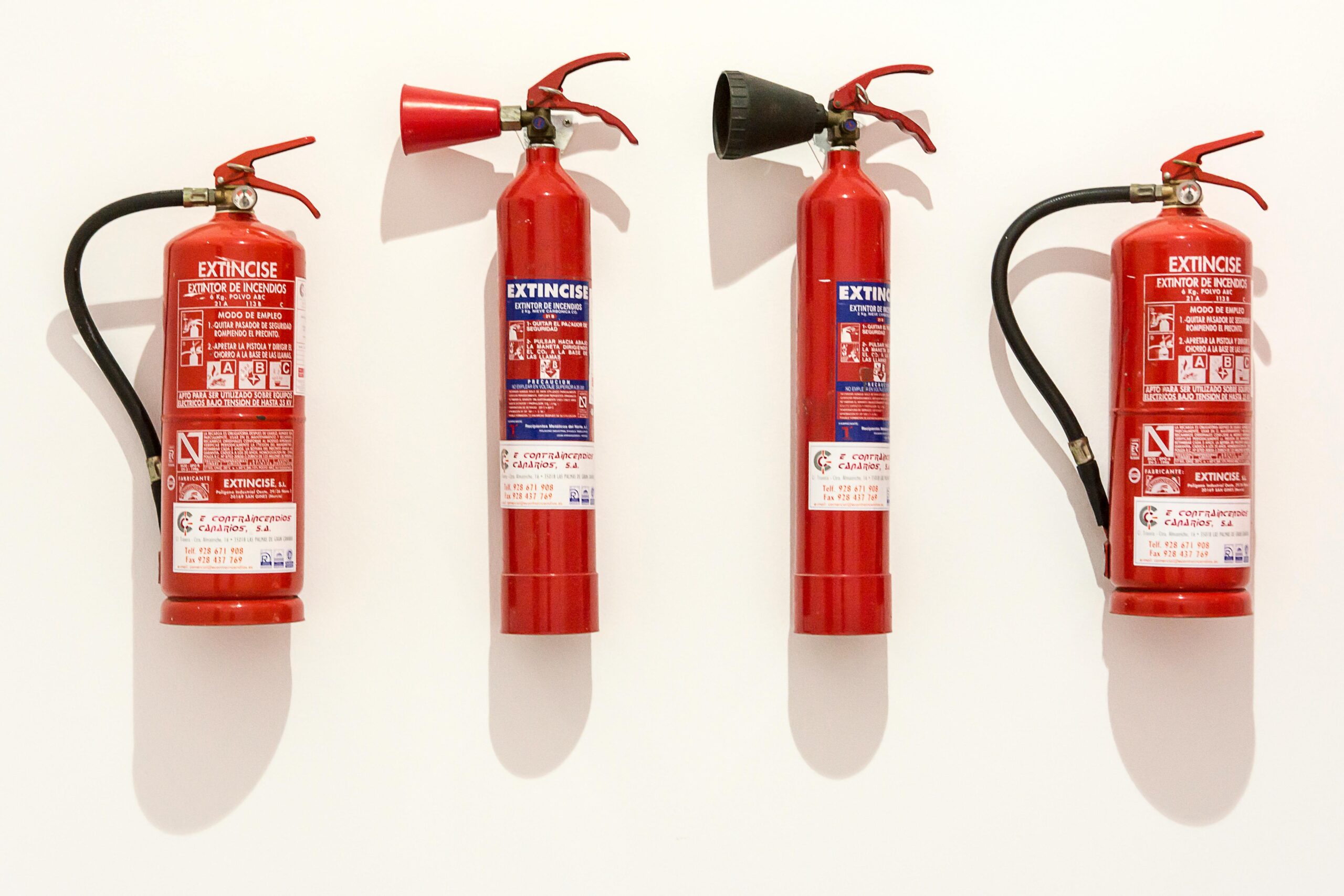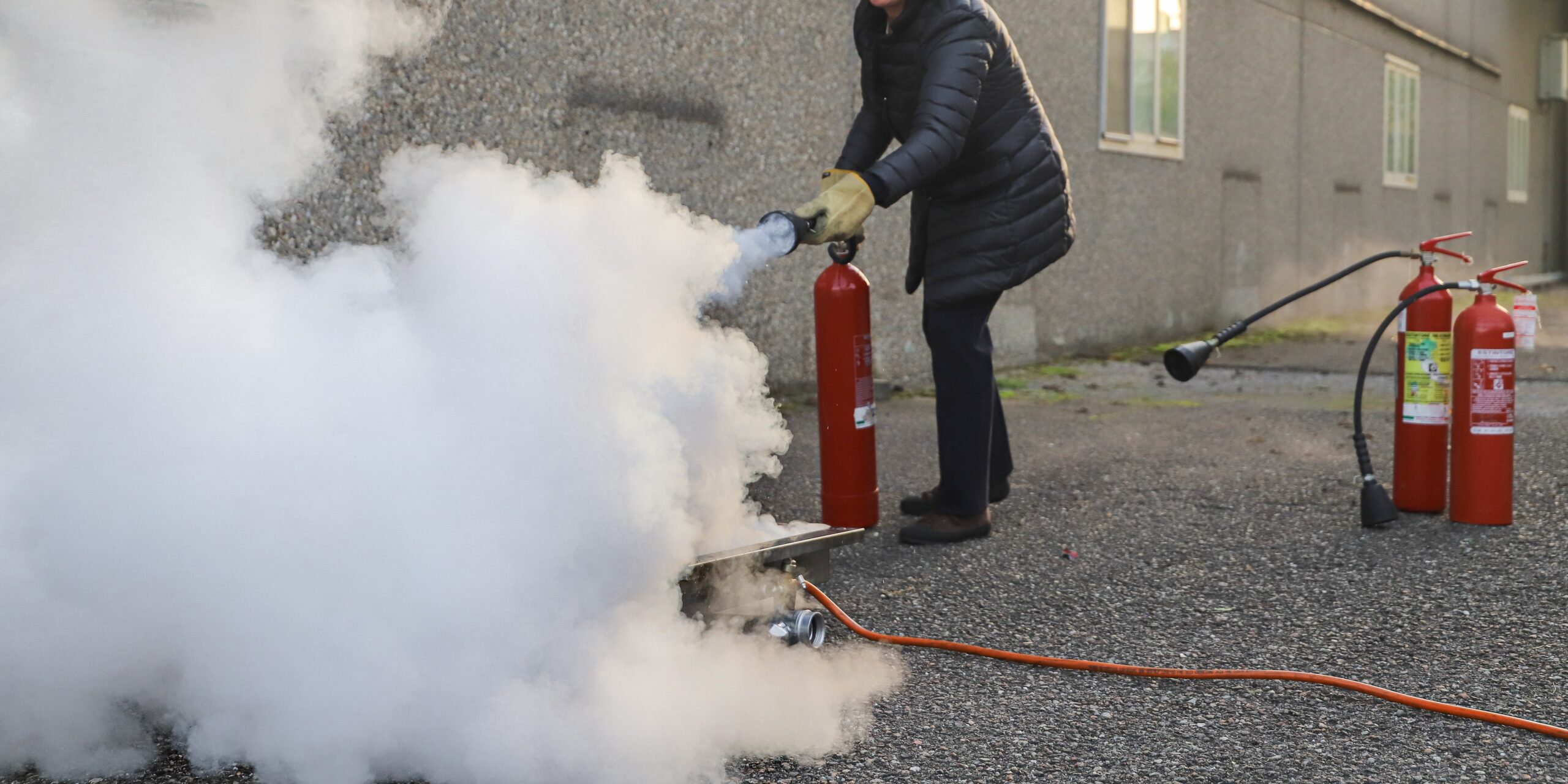
A CO2 fire extinguisher is a type of fire suppression tool used primarily to tackle electrical fires and fires involving flammable liquids. These extinguishers are filled with carbon dioxide, a non-flammable gas that works by displacing the oxygen in the air, effectively suffocating the fire. As a result, CO2 fire extinguishers are an essential piece of fire safety equipment, particularly in environments with electrical hazards, such as offices, warehouses, or laboratories.
Why Is Proper Use of CO2 Fire Extinguishers Important?
Understanding how to use CO2 fire extinguishers properly can save lives and protect property from extensive damage. When used correctly, CO2 extinguishers can put out fires quickly and efficiently, preventing a small incident from becoming a large, catastrophic event. However, improper use can lead to injuries, additional damage, or even the fire reigniting.
This guide is designed to provide essential information on how to use CO2 fire extinguishers properly, ensuring that you’re prepared in case of an emergency. In this article, you’ll learn:
-
What CO2 fire extinguishers are and how they work.
-
How to use them effectively during an emergency.
-
Common mistakes to avoid.
-
Why regular maintenance is important to ensure the extinguisher is always in working condition.
Whether you’re a business owner, property manager, or homeowner, knowing how to handle a CO2 fire extinguisher can make a significant difference in the outcome of a fire. Stay informed and ready to act when it matters most because when it comes to fire safety, every second counts.
By the end of this guide, you’ll have the knowledge and confidence to use CO2 fire extinguishers correctly, helping you keep your property and the people within it safe from fire hazards.
What Are CO2 Fire Extinguishers?
A CO2 fire extinguisher is a specialised type of fire suppression tool designed to tackle fires caused by electrical hazards or flammable liquids. The extinguisher contains carbon dioxide (CO2), a colourless, odourless gas that is non-flammable and works by removing oxygen from the environment, which is essential for combustion to occur. When discharged, CO2 rapidly floods the area surrounding the fire, lowering the oxygen level, which in turn smothers the fire and prevents it from spreading.
How Do CO2 Fire Extinguishers Work?
The principle behind the operation and to use CO2 fire extinguishers properly lies in their ability to displace oxygen, a key element in the fire triangle (fuel, heat, oxygen). The extinguishing agent, CO2, is stored in the extinguisher as a liquid under high pressure. When the extinguisher is activated by pulling the safety pin and squeezing the handle, the liquid CO2 is released through the nozzle, where it expands rapidly and turns into a gas. This gas then creates a dense cloud around the fire, lowering the oxygen levels and thus putting out the flames.
CO2 fire extinguishers are particularly effective on fires involving electrical equipment, as they do not leave behind any residue like foam or powder-based extinguishers. This makes them ideal for use in areas with sensitive equipment such as server rooms, electrical panels, and laboratories, where residue from other extinguishing agents could cause damage.
What Fires Are CO2 Fire Extinguishers Used For?
CO2 fire extinguishers are suitable for Class B and Class C fires. Class B fires involve flammable liquids, such as oils, paints, and solvents, while Class C fires involve electrical equipment. CO2 fire extinguishers should never be used on Class A fires (ordinary combustibles like paper, wood, or cloth) or Class D fires (combustible metals), as they are ineffective in extinguishing those types of fires. In fact, using a CO2 extinguisher on the wrong type of fire can be dangerous, as it could cause the fire to spread or worsen.
Key Benefits of CO2 Fire Extinguishers:
-
Residue-Free: Unlike other types of extinguishers that leave behind foam or powder, CO2 extinguishers leave no residue. This makes them ideal for use in environments with sensitive equipment.
-
Efficient for Electrical Fires: CO2 is non-conductive, making it safe for use on electrical fires. It will not damage electrical circuits or cause further electrical hazards.
-
Versatile for Liquids: CO2 extinguishers are effective on fires involving flammable liquids, making them suitable for many industrial and commercial settings.
Limitations of CO2 Fire Extinguishers
While CO2 fire extinguishers are very effective in the right conditions, they do have limitations. They are less effective on solid material fires (Class A) and are ineffective on certain types of metal fires (Class D). Additionally, CO2 extinguishers have limited range, and the gas can cause the temperature in the immediate area to drop significantly, which can pose a risk to those using it in an enclosed space without adequate ventilation.
By understanding the specifics of CO2 fire extinguishers and their appropriate use, businesses, property managers, and homeowners can ensure they are prepared for potential emergencies.

How CO2 Fire Extinguishers Work
CO2 fire extinguishers are one of the most commonly used types of fire suppression equipment due to their effectiveness in controlling fires caused by electrical hazards and flammable liquids. Understanding how they work is essential for ensuring they are used correctly and safely in emergency situations.
The Mechanism of CO2 Fire Extinguishers
A CO2 fire extinguisher operates by expelling carbon dioxide (CO2) gas under high pressure. The liquid CO2 is stored in the cylinder at a high pressure, allowing it to remain in a liquid state. When the extinguisher is activated, the liquid CO2 is released through the nozzle, and as it exits, it rapidly expands and turns into gas. This expansion causes a rapid decrease in temperature, which helps to smother the fire and eliminate the heat source, a key element in the fire triangle.
The cooling effect of CO2 is one of its primary mechanisms. The drop in temperature caused by the rapid expansion of CO2 helps to cool the fuel involved in the fire, reducing its temperature below the combustion point. This reduces the fire’s intensity and can quickly stop its spread. In addition to cooling, CO2 also works by displacing oxygen in the immediate vicinity of the fire. Since oxygen is essential for combustion, reducing the oxygen levels in the fire zone suffocates the fire, cutting off one of the key components needed to sustain it.
Why CO2 Is Effective for Electrical and Flammable Liquid Fires
CO2 fire extinguishers are particularly effective in environments with electrical equipment or flammable liquids. CO2 is a non-conductive gas, meaning it will not cause an electrical short circuit or damage sensitive equipment when used in an electrical fire. This makes CO2 fire extinguishers a preferred choice in settings like server rooms, electrical panels, laboratories, and kitchens.
Additionally, CO2 is highly effective in combating Class B fires, which involve flammable liquids such as oils, solvents, paints, and chemicals. As CO2 displaces oxygen, it prevents the fire from continuing to burn. Unlike foam or powder-based extinguishers, CO2 extinguishers leave no residue behind, making them ideal for use in environments where cleanliness is important, such as areas with electronics, computer systems, and machinery.
How to Properly Use a CO2 Fire Extinguisher
Using a CO2 fire extinguisher properly is vital to ensure that it is effective and safe. Here are the basic steps to use CO2 fire extinguishers properly:
-
Pull the Safety Pin: The first step is to pull the safety pin, which prevents accidental discharge. This releases the trigger mechanism.
-
Aim the Nozzle: Point the nozzle of the CO2 fire extinguisher at the base of the fire, where the fuel source is located. Aiming at the flames is ineffective, as the CO2 works by cooling the source.
-
Squeeze the Handle: Squeeze the handle to release the CO2 gas. A strong jet of gas will be released from the nozzle.
-
Sweep from Side to Side: Move the nozzle from side to side in a sweeping motion. This helps to distribute the CO2 over the entire area of the fire, covering the source and effectively smothering it.
-
Release the Handle: Once the fire is under control or extinguished, release the handle. If necessary, repeat the process until the fire is fully extinguished.
Safety Considerations When Using CO2 Fire Extinguishers
Although CO2 fire extinguishers are very effective, it’s important to keep certain safety considerations in mind:
-
Ventilation: CO2 is a heavy gas, and its concentration can quickly build up in enclosed spaces. When using a CO2 fire extinguisher in a confined area, ensure the area is well-ventilated to prevent CO2 from displacing too much oxygen, which can cause suffocation.
-
Protect Yourself from Cold Burns: CO2 is extremely cold when released from the extinguisher, and direct exposure to the nozzle or discharge can cause frostbite or cold burns. Always hold the discharge horn by the insulated handle, and avoid contact with the nozzle during use.
-
Target the Base of the Fire: Always aim at the base of the fire where the fuel is located. Focusing on the flames won’t be effective, as CO2 needs to cut off the fuel’s access to oxygen.
CO2 fire extinguishers are highly effective tools for tackling electrical and liquid fires, especially in environments where residue-free operation is critical. Their mechanism of action—displacing oxygen and cooling the fire makes them ideal for controlling and extinguishing specific types of fires. By understanding how CO2 fire extinguishers work and following the proper usage guidelines, individuals and businesses can improve their fire safety preparedness and minimise the risks associated with fires.

How To Use CO2 Fire Extinguishers Properly
CO2 extinguishers are a vital tool in combating specific types of fires, such as those involving electrical equipment and flammable liquids. To use a CO2 extinguisher effectively, it’s important to follow the correct procedure and understand its unique features. Here’s a step-by-step guide on how to use it properly.
- Pull the Pin
The first step in using a CO2 extinguisher is to pull the safety pin located at the top of the canister. This pin acts as a safety measure to prevent accidental discharge. Once removed, the extinguisher is ready to be used. - Aim the Nozzle
After pulling the pin, hold the nozzle at the base of the hazard. Aiming the nozzle directly at the flames will not be effective. The CO2 works by displacing oxygen, so it’s important to focus on the source of the blaze, which is usually at the base. Ensuring the nozzle is directed correctly will maximise the extinguisher’s effectiveness. - Squeeze the Handle
Once the nozzle is in position, squeeze the handle firmly to release the CO2. The gas will rapidly expand and begin to cool the source of the blaze. This cooling effect, combined with the displacement of oxygen, helps suppress the fire. Be prepared for the CO2 to flow out quickly, and keep the nozzle aimed at the base throughout. - Sweep Side to Side
While the gas is being released, move the nozzle from side to side. Sweeping across the fire helps ensure the CO2 reaches all areas of the fire’s source, providing uniform coverage. This motion allows the gas to smother the blaze, suffocating it by reducing the oxygen in the area. This process should continue until the hazard has been controlled or extinguished.
Safety Tips for Using CO2 Extinguishers Effectively
- Wear Appropriate Protective Gear: Although CO2 extinguishers are safe to use, they can still cause cold burns or frostbite if the nozzle or discharge area is touched. Always handle the extinguisher by the insulated handle.
- Ensure Proper Ventilation: CO2 is heavier than air, so when used in enclosed spaces, it can quickly displace oxygen, which may cause suffocation. Always ensure that the area is well-ventilated or evacuate the area if the gas builds up.
Why correct usage is important
Correctly using the CO2 extinguisher is essential to ensure that the fire is effectively smothered and doesn’t reignite. If the extinguisher is used incorrectly, the fire may not be adequately extinguished, and the risk of the blaze spreading increases. Moreover, incorrect usage can waste valuable resources, leaving your premises vulnerable to future incidents. Ensuring that the base is targeted and the sweep is thorough ensures a better chance of preventing the fire from reigniting.
Common Mistakes to Avoid
- Aiming at the Flames: A common mistake is to aim at the flames instead of the base of the fire. Remember, CO2 works best by displacing oxygen at the source of the fire.
- Not Sweeping Properly: Simply spraying the gas in one spot or not moving the nozzle from side to side can leave parts of the fire untreated.
- Improper Handling of the Nozzle: CO2 gas is extremely cold when expelled, and direct contact with the nozzle can cause cold burns. Always hold the nozzle by the insulated handle.
- Using the Extinguisher Too Early or Too Late: Using the CO2 extinguisher when the fire is small and manageable is important. If the fire has spread too much or already reached an uncontrollable state, using the CO2 extinguisher may not suffice.
The Importance of Training and Understanding Fire Safety Protocols
Training is crucial for ensuring the effective use of CO2 extinguishers. Fire safety protocols should be taught to all employees or residents in a building, including the correct way to use a CO2 extinguisher. This training not only ensures safety but also provides the confidence needed to act quickly in an emergency. Regular fire drills and proper safety education can prevent accidents and save lives.
By understanding the correct procedures for using CO2 extinguishers and practicing safety measures, you’ll be equipped to handle emergencies with confidence and control, safeguarding both your property and those within it.

Maintenance And Safety Checks For CO2 Fire Extinguishers
CO2 fire extinguishers are essential tools for controlling specific types of fires, especially those involving electrical equipment and flammable liquids. Like any safety equipment, CO2 extinguishers must be regularly maintained to ensure they function effectively when needed. Here’s a breakdown of the necessary maintenance and safety checks to ensure your CO2 extinguisher is ready for action.
- Regular Inspections
CO2 fire extinguishers need to be inspected regularly to ensure they are in working order. A quick visual inspection should be conducted monthly to check for any obvious signs of damage, corrosion, or leakage. The pressure gauge should also be checked to ensure that the extinguisher is properly pressurised. If the gauge reads low, it could indicate that the extinguisher needs recharging or has developed a fault. - Physical Condition Check
CO2 extinguishers should be visually inspected for any external damage, such as dents, rust, or cracks. This includes checking the condition of the nozzle, handle, and body of the extinguisher. Any visible signs of wear can compromise the extinguisher’s ability to function, making it essential to replace or repair the unit if necessary. Additionally, ensure that the safety pin is intact and that the seal is unbroken. - Weighing the CO2 Extinguisher
To ensure that the CO2 extinguisher has not lost any gas over time, it should be weighed periodically. The weight should be recorded on the label or in the maintenance log. If the weight is lower than the manufacturer’s recommended weight, it’s likely that the CO2 extinguisher needs to be recharged. This step is crucial to make sure the extinguisher will discharge effectively when required. - Pressure Check
CO2 extinguishers rely on stored carbon dioxide to expel gas, so it’s important to ensure the extinguisher is correctly pressurised. Many CO2 extinguishers have a pressure gauge that shows whether the pressure is within the recommended range. If the gauge shows that the pressure is low, it may indicate that the extinguisher needs to be refilled or that there’s an issue with the cylinder. - Recharging the CO2 Extinguisher
CO2 extinguishers should be recharged after each use, even if they have only been partially discharged. Even small amounts of CO2 release can reduce the extinguisher’s ability to perform effectively in an emergency. After discharge, take the extinguisher to a qualified service provider for recharging, ensuring it is ready for future use. If a CO2 extinguisher is not recharged after use, it may fail when needed the most. - Servicing and Professional Inspections
While regular checks and inspections can be performed by the user, professional servicing is also essential. At least once a year, it’s important to have the CO2 fire extinguisher inspected and serviced by a qualified technician. These professional checks will ensure that the extinguisher complies with safety standards and regulations. The technician will also inspect the internal components, refill the CO2, and conduct any repairs or adjustments needed to restore the extinguisher to full functionality. - Storage Considerations
The location of your CO2 extinguisher plays a key role in its long-term maintenance. CO2 extinguishers should be stored in a clean, dry environment, away from direct sunlight or extreme temperatures. Excessive heat or cold can affect the performance of the extinguisher. It’s also important to ensure that the extinguisher is easily accessible, as this will allow for quick action in the event of an emergency. - Importance of Proper Training
Even with a fully functional CO2 extinguisher, proper training is key to effective use. Regularly train staff, tenants, or residents in the safe use of CO2 fire extinguishers. Ensure that everyone knows where the extinguishers are located, how to use them, and what types of fires they are designed to extinguish. Regular fire drills and safety training can help everyone act quickly and confidently when faced with a fire emergency.
CO2 fire extinguishers are life-saving devices that need to be maintained to ensure they perform effectively during an emergency. Regular visual inspections, pressure checks, and professional servicing are necessary to keep the extinguisher in good working condition. Proper storage and regular training also play a critical role in maintaining safety. By following these maintenance guidelines, you ensure that your CO2 fire extinguisher is always ready for action, reducing the risk of injury, property damage, and financial loss in the event of a fire.
Ensuring Safety With Proper CO2 Fire Extinguisher Maintenance
Maintaining CO2 fire extinguishers is important for ensuring safety in both commercial and residential spaces. A well-maintained CO2 extinguisher can make all the difference when it comes to controlling specific types of fires, particularly those involving electrical equipment and flammable liquids. By conducting regular inspections, proper storage, and timely servicing, you can significantly reduce the risk of accidents and increase the chances of successful fire suppression.
For property owners and managers, the responsibility doesn’t stop at just having a CO2 fire extinguisher. It’s vital to ensure that these units are checked regularly, properly maintained, and recharged after use. By adhering to these steps, you can ensure that your CO2 extinguishers are always ready to use when required.
When you hire Legacy GLM Group for CO2 fire extinguisher maintenance, you get professional services tailored to meet all fire safety requirements. With our expertise in CO2 fire extinguisher maintenance, we make sure your property stays compliant with safety regulations, giving you peace of mind that your extinguishers are reliable in an emergency.
As a trusted fire protection service provider, Legacy GLM Group ensures that your fire extinguishers are always in top condition, providing security against potential fire risks. We also offer fire safety training sessions for your team, helping them understand how to properly use fire safety equipment.
If you need expert CO2 fire extinguisher maintenance services, contact Legacy GLM Group today at 02392 985 776. Let us assist you in keeping your property safe, ensuring you have the best fire protection solutions available. We’re here to ensure your property and staff are protected from fire hazards.



